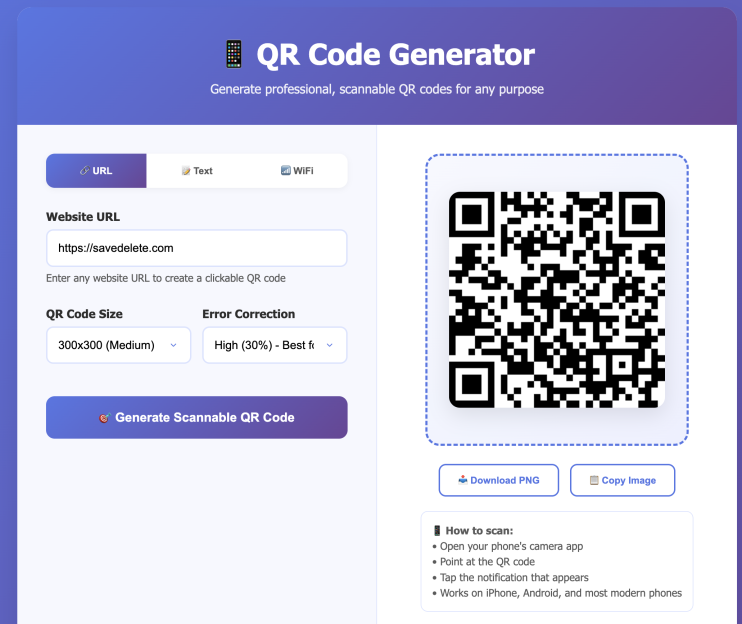Securing a General Services Administration (GSA) Multiple Award Schedule (MAS) contract can open a powerful gateway into the federal marketplace. For businesses seeking long-term, stable revenue from government clients, a GSA contract represents a trusted pathway to consistent sales and enhanced credibility. With billions of dollars in government spending flowing through the MAS program annually, this opportunity is simply too significant to ignore, especially for small and mid-sized businesses looking to scale. That’s why turning to a GSA expert early in the process can be a game-changing decision.
The appeal is understandable: “Why not apply on our own?”; many business owners ask. The idea of independently managing the process may seem like a cost-saving move at first. After all, who knows your business better than you? But what many companies discover â often too late â is that the GSA application process is not just complex, but also highly technical, detail-driven, and unforgiving. A single overlooked form, pricing miscalculation, or misunderstanding of compliance requirements can result in delays, rejections, or even long-term setbacks.
At Price Reporter, we’ve seen firsthand how even well-established businesses can struggle without expert guidance. Since 2006, our team has helped over 1,000 companies successfully navigate the GSA contracting process â from initial application to full lifecycle management â ensuring they avoid costly errors and stay competitive in the federal space.
In this article, we’ll explore the most common reasons businesses fail when applying for a GSA contract without expert support â and, more importantly, how to avoid these costly missteps.
Misunderstanding the Complexity of the Process
One of the biggest reasons businesses fail when applying for a GSA contract on their own is the fundamental underestimation of how complex the process truly is. It’s not just a matter of submitting a few forms and waiting for approval. The GSA acquisition process is a structured, multi-phase evaluation that requires precision, consistency, and deep familiarity with government procurement standards.
A common myth among newcomers is that the GSA Schedule is “just a government version of Amazon”; â a platform where you simply upload your products, set prices, and wait for orders. While the GSA Advantage portal might look similar on the surface, the reality behind getting listed â and staying compliant â is far more demanding.
To be considered for a GSA contract, businesses must prepare and submit a comprehensive proposal package. This includes:
- Detailed financial statements demonstrating stability and responsibility
- Commercial Sales Practices (CSP) disclosures, outlining how pricing is offered to other customers
- Past performance references and documentation proving your ability to perform on government contracts
- Technical/subject matter assessments, technical proposals, including narratives describing your company’s capabilities, structure, and compliance systems
- Pricing templates that must follow strict formatting and justification rules
Each of these elements must align with GSA’s regulatory framework and pricing policies. Even a small inconsistency â such as a mismatch between your commercial catalog and your proposed government rates â can trigger requests for clarification, lengthy delays, or outright rejection.
This level of scrutiny is not meant to be punitive, but protective. The government wants to ensure it is working with reliable, qualified vendors who can meet standards, honor commitments, and deliver value to taxpayers. For businesses unfamiliar with federal acquisition rules, trying to navigate this landscape solo can be overwhelming â and costly.

Incomplete or Inaccurate Documentation
Another major reason businesses struggle during the GSA application process is submitting incomplete or inaccurate documentation. The GSA holds vendors to a high standard when it comes to the precision, accuracy, and consistency of their submissions â and for good reason. These documents form the foundation of a legally binding agreement between your business and the federal government.
Your proposal must comply with a wide range of document standards, including but not limited to:
- Commercial Sales Practices (CSP) disclosures â detailing how your pricing compares across different customer types
- Trade Agreements Act (TAA) compliance â ensuring all products originate from approved countries
- Terms and conditions â clearly stated and aligned with GSA policies
- Digital formatting â proper file types, naming conventions, and system compatibility for electronic submission
Seemingly minor oversights â like omitting a required attachment, submitting a pricing sheet with outdated SKUs, or listing products that are not TAA-compliant â can derail your entire application. The GSA will not correct these errors for you; at best, they may request clarifications, which can delay the process by weeks or even months. At worst, your application may be rejected outright, forcing you to restart from scratch.
Here are a few of the most common documentation mistakes:
- Missing or unsigned letters of supply
- Mismatched pricing between proposal files and catalogs
- Incorrect or incomplete product descriptions
- Inclusion of non-compliant countries of origin
- Failure to follow template instructions or formatting guidelines
Each missing detail creates friction, and the GSA is under no obligation to move your proposal forward until all compliance boxes are checked. This is why many businesses find themselves stuck in a cycle of revisions and resubmissions, often burning valuable time and resources.
Being meticulous isn’t optional â it’s essential. When it comes to federal contracting, attention to detail isn’t just a best practice; it’s a prerequisite for success.
Incorrect or Unrealistic Pricing Strategies
Pricing is one of the most sensitive and scrutinized aspects of a GSA contract proposal â and one of the most common areas where businesses go wrong. Whether it’s underpricing in an attempt to win approval or overpricing to pad margins, incorrect pricing strategies can jeopardize your application, your profitability, and even your long-term compliance.
Many businesses mistakenly believe they can offer whatever price they feel is fair, but GSA pricing isn’t just about what you think your products or services are worth â it’s about how your prices compare to your Most Favored Customer (MFC) and the broader federal market.
The GSA expects your government pricing to be equal to or better than what you offer your best commercial clients under similar terms and conditions. This is enforced through the Price Reduction Clause (PRC), which requires vendors to maintain the agreed-upon pricing relationship throughout the life of the contract. If you later offer lower prices to another customer in the commercial sector, you may be obligated to reduce your GSA price as well â or risk breaching the contract.
Another frequent misstep is failing to conduct proper market and competition analysis. Without understanding what similar vendors are offering and how your pricing aligns with government expectations, your proposal may either be uncompetitive (and get passed over) or unsustainable (leading to losses if awarded). Pricing too low to “get in the door”; can create significant problems when fulfilling orders under tight margins, especially considering hidden costs like compliance, reporting, and administrative overhead.
Examples of common pricing errors include:
- Offering commercial discounts not disclosed in CSP documentation
- Ignoring indirect costs when setting labor rates or product pricing
- Failing to justify pricing with market research or historical data
- Proposing rates out of alignment with GSA’s fair and reasonable pricing benchmarks
Getting your pricing right is both an art and a science. It requires balancing competitiveness with profitability while adhering to complex GSA rules. Businesses that approach this stage without expert guidance or detailed financial modeling often find themselves trapped in contracts that are difficult â or impossible â to manage profitably.
Failure to Meet Compliance Requirements
Many businesses assume that compliance becomes relevant after they’ve secured a GSA contract. In reality, compliance requirements begin during the application process â and failure to understand or plan for them early on can lead to major setbacks or even disqualification.
Trade Agreements Act (TAA) compliance, minimum sales thresholds, and Industrial Funding Fee (IFF) reporting are not just administrative footnotes; they are core obligations that the GSA evaluates when reviewing your proposal.
To help you navigate these areas, here is a breakdown of key compliance requirements, what they entail, and what can happen if you get them wrong:
| Compliance Area | Requirement | Frequency / Timing | Common Mistakes | Consequences of Non-Compliance |
| TAA Compliance | Products must originate from TAA-designated countries | At proposal stage and ongoing | Including items made in China, India, or other non-compliant countries | Proposal rejection, contract cancellation, legal risk |
| Minimum Sales (1st Option) | $100,000 in total sales within your first 60â¯months (initial fiveâyear term) | First 5 Years (1st Option) | Not planning for federal marketing; weak outreach strategy | Contract cancellation due to inactivity |
| Minimum Sales (After Option 1) | $125,000 in total sales within each 60âmonth option period thereafter | After Option 1 (Year 6 to 20) | As above | Contract cancellation due to inactivity |
| IFF Reporting | Report all GSA sales and pay 0.75% of total sales to GSA | Quarterly (even $0 reports required) | Late submissions; inaccurate sales reporting; missed payments | Penalties, audits, potential termination |
| CSP Disclosures | Full disclosure of pricing terms offered to commercial customers | At proposal submission | Omitting discounts or pricing tiers offered to other clients | Breach of PRC (Price Reduction Clause), pricing violations |
| TDR (if applicable) | Submit detailed monthly sales data in lieu of CSP disclosures | Monthly | Missing line-item data; incomplete transaction records | Data discrepancy, audit risk |
| Catalog Maintenance | Keep GSA Advantage listings current and compliant | Ongoing | Outdated SKUs, incorrect pricing, discontinued products still listed | Negative audit findings, loss of buyer trust |
| Contractor Assessments | Pass Contractor Assessment Visits (CAVs) and respond to audit requests | Periodic | Lack of documentation; poor system for tracking compliance | Low past performance scores; risk of future award denials |
These requirements aren’t optional â they are integral to maintaining your contract in good standing. Worse, missteps in any of these areas can compound over time, resulting in increased scrutiny, performance flags, or even debarment from federal contracting altogether.
Choosing between CSP and TDR is another crucial compliance decision. While TDR simplifies some aspects by removing the Price Reduction Clause, it comes with its own data-heavy obligations. Misunderstanding the implications of each path â or choosing one based on convenience rather than suitability â can lead to compliance gaps from day one.
In short, compliance is not a one-time checklist. It’s a continuous obligation. Businesses that treat it as such â and put the right systems, tools, and partners in place â are far more likely to thrive in the GSA environment.
Underestimating the Time and Resources Required
One of the most underestimated aspects of applying for a GSA contract is the amount of time and internal effort it actually takes. Many businesses approach the process thinking it’s a matter of submitting some forms and getting approval within a few weeks. In reality, the GSA application process often takes six to twelve months or more, depending on the complexity of the offer, the accuracy of the submission, and the responsiveness of both the applicant and the assigned GSA Contracting Officer.
For small and mid-sized businesses, this timeline can come as a shock. Unlike larger corporations with dedicated government contracting departments, smaller firms often assign the GSA process to a single employee â usually someone already juggling multiple roles. This can stretch resources thin, introduce avoidable errors, and create significant internal strain.
Tasks such as gathering financial records, verifying product compliance, completing detailed pricing templates, and responding to GSA clarification requests demand time, focus, and technical knowledge. And delays are cumulative â if a contracting officer requests revisions and you can’t respond promptly, your application gets pushed to the back of the queue.
These delays don’t just slow down your approval â they can have real financial consequences. Every month spent waiting for your contract is a missed opportunity to compete for federal sales. Government agencies operate on strict buying cycles, and timing matters. If your contract isn’t active when an opportunity arises, you’re simply not eligible to bid â and someone else will get the business.
The opportunity cost of trying to manage the process in-house without a clear roadmap or sufficient support can be high. Businesses may miss critical seasonal buying periods (like end-of-fiscal-year procurement), or burn through internal bandwidth better spent on operations, marketing, or client service.
Understanding and planning for the true scope of effort required is essential. Applying for a GSA contract is not a one-off administrative task â it’s a strategic project that requires commitment, resources, and, ideally, expert guidance.
Lack of Strategic Positioning and Market Awareness
One of the more subtle â yet incredibly damaging â reasons businesses fail in their GSA contract pursuit is a lack of strategic positioning and market awareness. Simply put, many companies invest time and resources into the application process without first understanding whether their offerings are a good fit for the federal market.
The government doesn’t buy everything, and it doesn’t buy the same way the commercial sector does. Businesses that don’t take the time to research what the government buys, how it buys it, and from whom are flying blind. This often results in applying under the wrong Special Item Number (SIN), targeting categories where the government already has an oversupply of vendors, or offering products/services that simply aren’t in federal demand.
Targeting the wrong SIN â or misclassifying your offerings â can be fatal to your proposal. Each SIN has its own pricing benchmarks, scope definitions, and competition dynamics. Submitting a proposal under a SIN that doesn’t accurately reflect your core competencies can raise red flags with GSA reviewers and lead to extensive delays, rejections, or an awarded contract that delivers little to no sales.
Additionally, some businesses inadvertently overstate or misrepresent their capabilities to appear more “government ready”; â a tactic that often backfires. GSA Contracting Officers are trained to spot inconsistencies and will push back on vague or unsupported claims. If your past performance doesn’t align with what you’re proposing, or your pricing lacks a clear basis in market data, your application is likely to stall.
This is where a pre-award market analysis becomes crucial. Before even beginning the GSA application, businesses should:
- Analyze federal procurement trends in their industry
- Identify high-demand SINs and current competition
- Review agency buying histories and contract award data
- Assess if their products/services meet federal standards and compliance requirements
A strategic, data-informed approach allows businesses to enter the process with clarity, realistic expectations, and a higher chance of success. Without it, companies risk spending months pursuing a contract that may never deliver ROI â or worse, one that isn’t viable from the start.
No Backup Plan for Post-Award Management
Securing a GSA contract is an impressive achievement â but it’s only the beginning. Many businesses make the mistake of focusing solely on getting the award, without preparing for what comes next. Unfortunately, without a solid post-award management strategy, that hard-won contract can quickly turn into a burden rather than a business advantage.
Once your contract is active, you’re immediately responsible for ongoing tasks that require both time and infrastructure. These include:
- Uploading and maintaining your catalog on GSA Advantage
- Submitting contract modifications for price changes, discontinued items, or new products
- Ensuring all listings remain Trade Agreements Act (TAA) compliant
- Preparing for and passing compliance audits, including Contractor Assessment Visits (CAVs)
- Accurate and timely IFF reporting every quarter
All of this requires systems, personnel, and processes â ideally in place before you’re awarded the contract. Without them, vendors often struggle to stay compliant, respond to audit requests, or keep their offerings updated, which can result in warnings, penalties, or even cancellation of the contract.
Additionally, many businesses don’t fully understand that GSA contracts are not passive sales channels. Having a contract doesn’t guarantee purchases. You still need to actively market your contract, pursue federal buyers, respond to RFQs (Requests for Quotations), and keep your catalog competitive â both in pricing and presentation.
That’s why it’s critical to think of your GSA Schedule as a long-term business strategy, not a one-time transactional milestone. It’s an ongoing commitment that, when managed properly, can generate stable and scalable revenue streams for years to come. But without proper support â either internal or via experienced consultants â businesses risk leaving money on the table or worse, losing the opportunity altogether.
In short: getting the contract is a victory. Managing it well is how you turn that victory into profit.

How to Avoid These Pitfalls
The challenges of applying for and managing a GSA contract are real â but they’re not insurmountable. The most successful vendors are those who approach the process with a clear strategy, realistic expectations, and the right mix of expertise and tools.
Here are several proven ways to avoid the most common pitfalls:
Invest in Expert Guidance
One of the smartest moves a business can make is partnering with professionals who specialize in GSA contracting. Experienced consultants, compliance advisors, or legal specialists understand the nuances of GSA policies and can help you avoid costly mistakes. They know what Contracting Officers look for, how to structure your pricing properly, and how to keep your proposal on track.
Build Internal Processes Early
Even if you work with outside experts, you’ll still need internal processes to manage documentation, pricing updates, and compliance reporting. Start building these systems before your contract is awarded. That includes assigning responsibilities, organizing records, creating audit-ready templates, and developing timelines for updates and reporting.
Use the Right Tools
Technology can dramatically simplify post-award obligations. Tools for catalog uploads, order lifecycle management, pricing intelligence, and compliance tracking can help reduce errors, save time, and ensure you’re meeting all GSA requirements. Whether you’re managing thousands of SKUs or a small service contract, automation and dashboards can be game changers.
Continuously Educate Yourself
GSA rules and systems evolve regularly. Stay current by attending GSA-hosted & GSA consultant webinars , subscribing to relevant newsletters, reading updated agency guides, and learning from others in the space. Industry events and peer groups can also be great sources of real-world advice, tips, and updates on best practices.
In the end, avoiding these pitfalls is not about cutting corners â it’s about laying the groundwork for long-term success. The GSA Schedule isn’t a “set-it-and-forget-it”; contract. It’s a powerful business channel that rewards those who take it seriously, stay informed, and invest in doing it right from the very beginning.
Conclusion
The potential of a GSA contract is undeniable â it offers businesses a gateway into a stable, high-value market with long-term growth opportunities. But the risks of going through the process alone can be just as significant. Missteps in pricing, compliance, documentation, or market positioning can delay or derail even the most promising applications. That’s why strategic preparation, professional support, and realistic expectations are critical to success.
At Price Reporter, we’ve been helping companies navigate this process since 2006. With over 1,500 GSA contracts under management and a team of experienced consultants, compliance experts, and federal market analysts, we understand what it takes to succeed in the government space. Businesses that treat GSA contracting not as a paperwork exercise, but as a long-term growth strategy â and partner with experts to manage the complexities â are the ones who see the greatest return.







